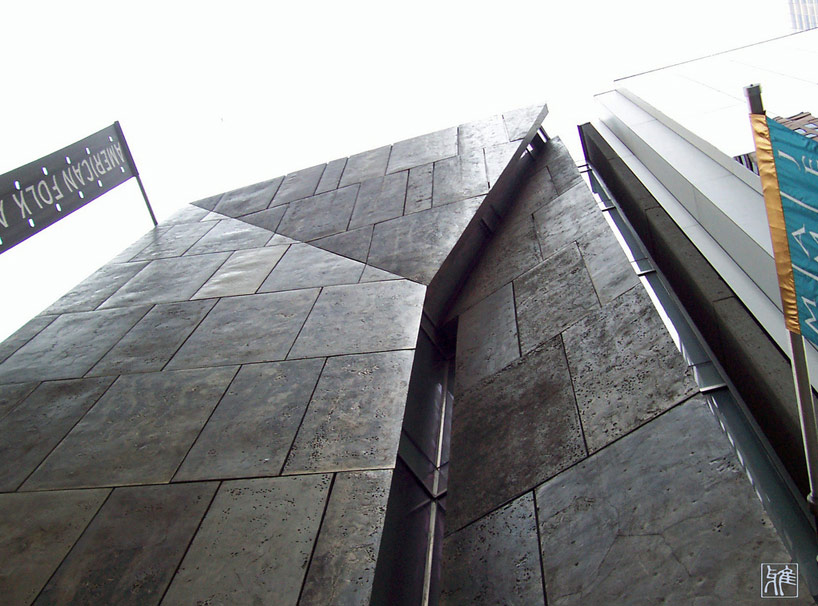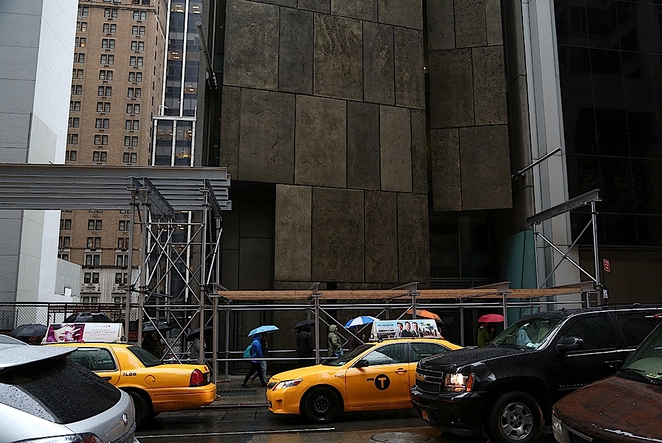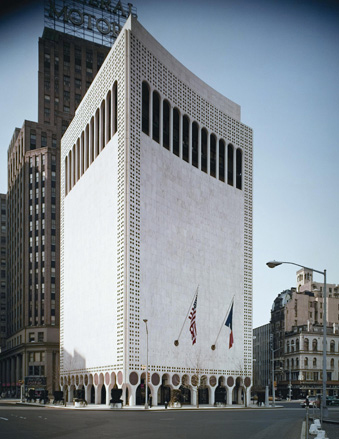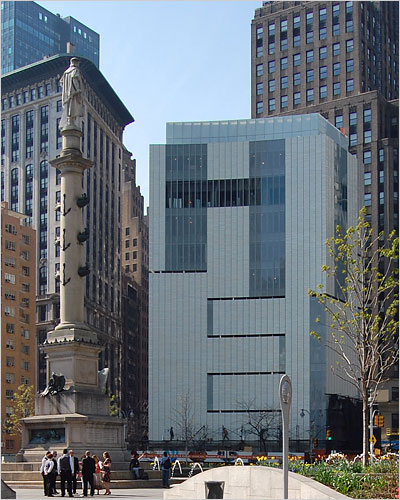The final fate of the American Folk Art Museum (AFAM) in New York has been in the headlines again. Just last week, MoMA began demolition of the AFAM’s heralded, heavy bronze façade. Many voices, both professional and public, have decried MoMA’s decision and actions, but I for one support their move. Here’s why:
The smaller museum was already a compromised, tight space when it was entirely its own entity. It is not possible to make narrow cramped spaces work with the program of the large gallery spaces MoMA needs, unless you’re a magician.
Was the AFAM really so good that it deserved to be saved? I just don’t see the merit in saving it for its own sake.
I visited AFAM when it first opened with my mother who loves all things crafted by hand. I recall thinking the confined spaces, colors, details, lighting, and materials had little if not nothing to do with the wonderful artifacts displayed in the museum. There was a skylight that spilled light down through the center, but all in the context of some early 2000’s aesthetic, and certainly not adequately. Movement through the building was awkward, and the design did not have the delicacy of the things that were inside it. The massive facade, which I thought was sculpturally beautiful, was a contrast to the collection, but not the kind of contrast that helps one appreciate the difference between unlike things. The building didn’t reflect the spirit of American folk art in any way. I think that was unfortunate, and ultimately it’s downfall. The façade-a beautiful architectural element on it’s own (and monument to the designers) was so severe it stifled the collection.

Also, the façade was an obviously expensive gesture and that, too, didn’t strike the right note with the humble nature of the treasures within. In short, it felt like a bunker or a bank, and that’s exactly the opposite experience appropriate. The end result was the museum’s purpose could not be fulfilled.

But there’s another aspect to this debacle that concerns me, and it has to do with the architects involved. Years ago, there was a panel discussion regarding what to do with the Huntington Hartford Museum on Columbus Circle, designed by Edward Durrell Stone and whether or not to landmark it with Landmarks Preservation. Billie Tsien spoke up and talked about what could be done to it in terms of additions or insertions and was very much in favor of completely altering the building—in my opinion almost as though interviewing for the position. She expressed little concern or appreciation for Stone’s design. We all saw what became of the iconic Hartford Museum, re-skinned to match its corporate neighbor, and made unrecognizable from its original design. Now I find it ironic that Ms. Tsien is one of the loudest voices when her AFAM was threatened with destruction. Todd Williams and Billie Tsien designed a Brutalist building for AFAM; it didn’t function very well, and like the Hartford Museum, it, too, became obsolete. Perhaps if the building had been truly inspired by the creativity and ingenuity of the collection within, the public would have swelled and decried its demise. Perhaps if the building were designed so that people could visit it and be inspired to craft…
So I’m left wondering: Is the phrase “location, location, location…” always in the best interest of a small institution? The AFAM moved to be next door to MoMA hoping for visitors by adjacency. They hired a big name architect to give them a “product”. What they got was near bankruptcy, and nearly de-acquisitioning of the entire collection to the Smithsonian and no museum at all.

